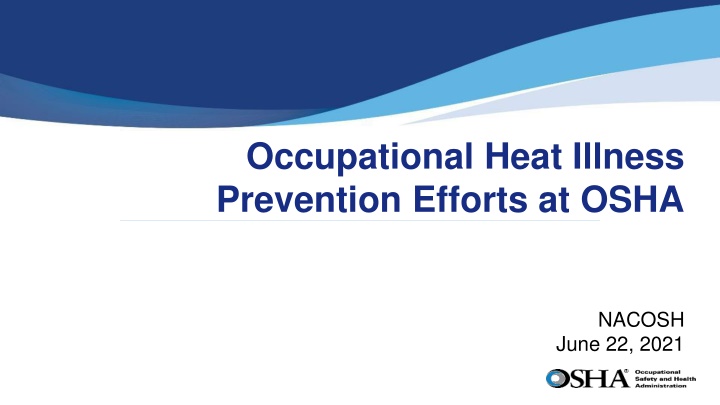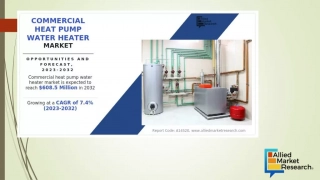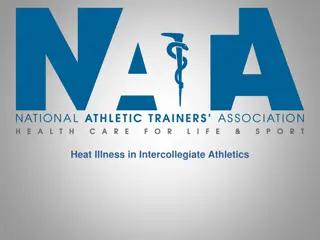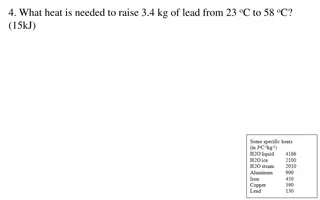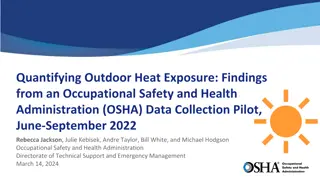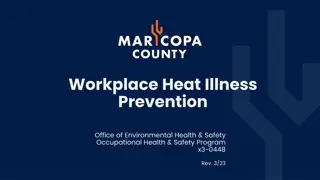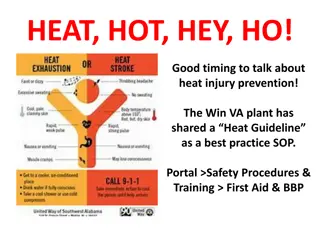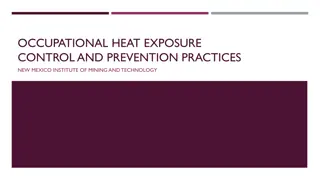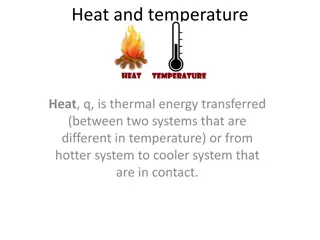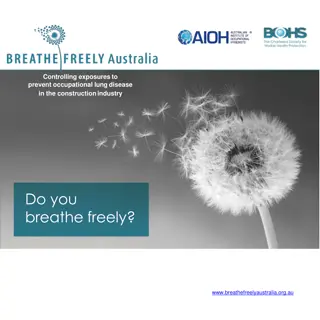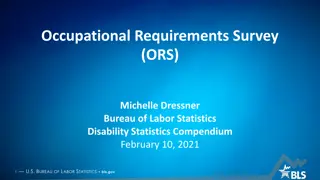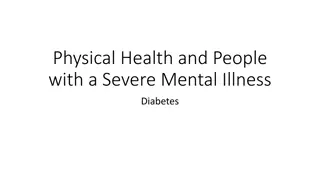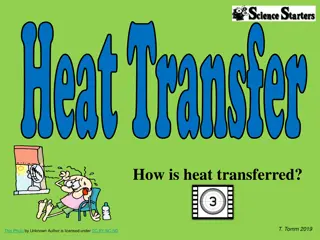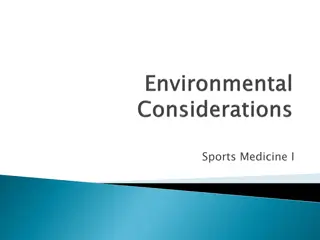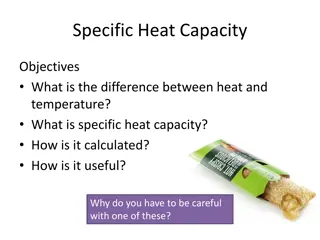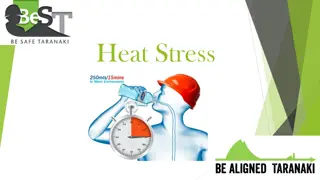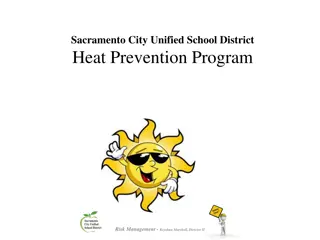Occupational Heat Illness Prevention Efforts Overview
OSHA's efforts in preventing occupational heat illness, engaging stakeholders, and outreach to various partners are highlighted in this overview. The campaign emphasizes educating employers and workers about the dangers of working in the heat, with a focus on strategies to enhance campaign effectiveness moving forward. Key themes and priorities emerging from stakeholder discussions include acclimatization, COVID-19 considerations, practical solutions for employers, and unique work arrangements.
Uploaded on Mar 02, 2025 | 0 Views
Download Presentation

Please find below an Image/Link to download the presentation.
The content on the website is provided AS IS for your information and personal use only. It may not be sold, licensed, or shared on other websites without obtaining consent from the author.If you encounter any issues during the download, it is possible that the publisher has removed the file from their server.
You are allowed to download the files provided on this website for personal or commercial use, subject to the condition that they are used lawfully. All files are the property of their respective owners.
The content on the website is provided AS IS for your information and personal use only. It may not be sold, licensed, or shared on other websites without obtaining consent from the author.
E N D
Presentation Transcript
Occupational Heat Illness Prevention Efforts at OSHA NACOSH June 22, 2021
Presentation Overview 1. Current heat illness prevention efforts at OSHA 2. Intention to engage NACOSH work group 3. Overview of questions of interest for NACOSH work group 4. Discussion of questions of interest for NACOSH work group 5. Overview of considerations for work group composition 6. Discussion of work group composition
Approach OSHA's Heat Illness Prevention campaign, launched in 2011, educates employers and workers on the dangers of working in the heat. Collaborated with the Office of Communications in Fall 2020 to brainstorm strategies moving forward. One top priority has been to engage partners and stakeholders to better inform campaign and guidance needs.
Partner and Stakeholder Outreach And we are planning additional outreach to: To date we have had 20+ conversations with: OSHA National Office Directorates OSHA Regional Offices State Plans DOL Working Groups (internal and external) DOL Farmworker Group NIOSH NORA Landscaping Working Group MACOSH Longshoring Work Group MACOSH Shipyards Work Group External Partners: National Institute of Occupational Safety and Health (NIOSH) National Oceanic and Atmospheric Administration (NOAA) National Institute of Environmental Health Sciences (NIEHS) Environmental Protection Agency (EPA) Center for Construction Research and Training (CPWR) OSHA alliance and Safe+Sound partners across industries exposed to indoor and outdoor heat, including but not limited to: National Association of Landscape Professionals The Roadway Work Zone Safety and Health Partners National Waste and Recycling Association Tree Care Industries Association National Roofing Contractors Association Retail Bakers of America Warehousing Education and Research Council National Association of Manufacturers World Millwork Alliance National Asphalt Pavement Association
Emerging Themes and Priorities New Topics: Over 25 mentioned in calls Acclimatization of new and returning workers Clearer information on signs and symptoms of heat stress, providing first aid COVID-19 and face coverings Practical solutions for employers Temperature metrics Unique work arrangements (e.g., temporary workers) Risk factors and interaction of substances (e.g., medications, drugs, alcohol, energy drinks) Employer responsibilities and workers' rights Industries: Over 30 mentioned in calls Outdoor: Construction Agriculture Delivery and Postal Services Landscaping Wildland Firefighting Federal Employees Sanitation and Waste Removal Emergency Response and Preparedness Indoor: Foundries Bakeries Manufacturing Food Processing Fisheries Utilities Railroads Oil and Gas Logging Meat packing Restaurants Warehousing Teachers Mining Campaign Elements: Languages (17 mentioned) Update Existing Materials New Materials Engagement Tactics
Heat Illness Prevention Campaign Updates New/Updated Products: Updated OSHA's heat poster Updates to OSHA's heat wallet card Infographics for social media Talking points and outreach presentation Across these products: Greater emphasis on acclimatization Provide information on first aid in the event of a heat emergency Clarifying signs and symptoms of heat illness Provide practical recommendations for preventing hazardous heat exposure Add a worker voice and perspective
Remaining Gaps and Challenges Full scope of industries facing hazardous heat conditions at work Tracking and monitoring hazardous heat conditions in indoor and outdoor work environments Strategies to prevent occupational heat illness in indoor and outdoor work environments Practical, feasible solutions in a variety of industry settings Making decisions on a variety of timescales (e.g., daily operations, seasonal planning) Full range of health outcomes (e.g., heat illness, chronic disease, safety impacts, toxicological interactions) Economic incentives and disincentives related to occupational heat illness Preventing occupational heat illness in the face of climate change
Intent to Engage NACOSH Work Group OSHA intends to engage a NACOSH work group on Heat Illness Prevention in both indoor and outdoor work settings Work group will meet outside of and in addition to full NACOSH meetings Work group will consist of 2-3 NACOSH members and approximately 10 members from other stakeholder groups
For Discussion Work Group Composition Questions of Interest for NACOSH Work Group Overview of topic areas (5 minutes) Current practices, best practices and challenges for each topic Heat illness prevention Heat hazards Acclimatization Monitoring Heat emergencies Existing state standards Discussion of topic areas (30 minutes) Overview of work group composition (1 minute) Discussion of work group composition (10 minutes)
Heat Illness Prevention Questions of Interest for NACOSH Work Group Heat Illness Prevention What are current practices in occupational heat illness prevention? What are the existing best practices in occupational heat illness prevention? What challenges are there in occupational heat illness prevention?
Heat Illness Prevention Questions of Interest for NACOSH Work Group Heat Hazards How is hazardous heat currently identified and defined in indoor versus outdoor industries? What are existing best practices in identifying heat hazards in indoor and outdoor work settings? How are workers notified of hazardous heat? How should they be notified? Where are heat hazards being experienced and in what industries? What challenges are there with identifying heat hazards?
Heat Illness Prevention Questions of Interest for NACOSH Work Group Acclimatization What are current practices for implementing acclimatization? What are the best practices for implementing acclimatization in various industries and across businesses of various sizes? What are the challenges with acclimatizing workers, including temporary workers? Are there different challenges for acclimatization in indoor work settings versus outdoor work settings?
Heat Illness Prevention Questions of Interest for NACOSH Work Group Monitoring Are there industries implementing exposure, medical or physiological monitoring for heat exposure? What are the best practices for implementing a monitoring program and how effective are the monitoring activities? How is monitoring implemented or tracked? What are the challenges with this type of monitoring?
Heat Illness Prevention Questions of Interest for NACOSH Work Group Heat Emergencies How do organizations with both indoor and outdoor work environments deal with heat illness emergencies if they arise? What are current best practices in workplace response to occupational heat illness emergencies? What are the challenges with responding to a heat illness emergency? What should be included in a heat emergency response plan?
Heat Illness Prevention Questions of Interest for NACOSH Work Group Worker Training and Engagement How are workers involved in heat illness prevention? What types of training programs are being implemented and how effective are they? What are best practices in worker training and engagement in heat illness prevention? Are workers involved in the design and implementation of heat illness prevention activities? What challenges are there with worker training and engagement for heat illness prevention?
Heat Illness Prevention Questions of Interest for NACOSH Work Group Existing State Standards Of the existing state standards, have any been more effective or challenging than others? Why? What are challenges with implementation of existing state standards? What components of a state standard or program should be included in federal guidance or regulatory efforts? What would not be feasible to include at the federal level?
Considerations for Work Group Composition Approximately 12-13 members, including 2-3 members from NACOSH Balanced perspectives across indoor and outdoor work settings, as well as across: Labor Management Professional Society / Trade Organization Technical Experts Government / OSHA State Plan /Public Sector
